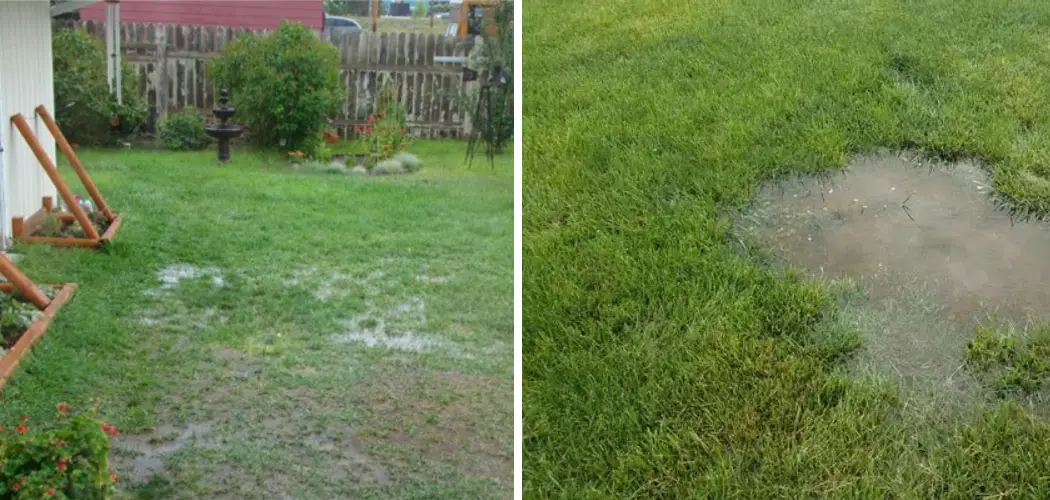Are you worried that your yard may have a water leak? Do you have a certain spot in your yard that always seems to be damp or soggy, even when it hasn’t rained? If so, then this blog post is for you! Knowing how to detect and fix a water leak in your yard can be a challenging task. There are several signs that indicate there might be an issue, and it takes know-how to find the source of the problem.
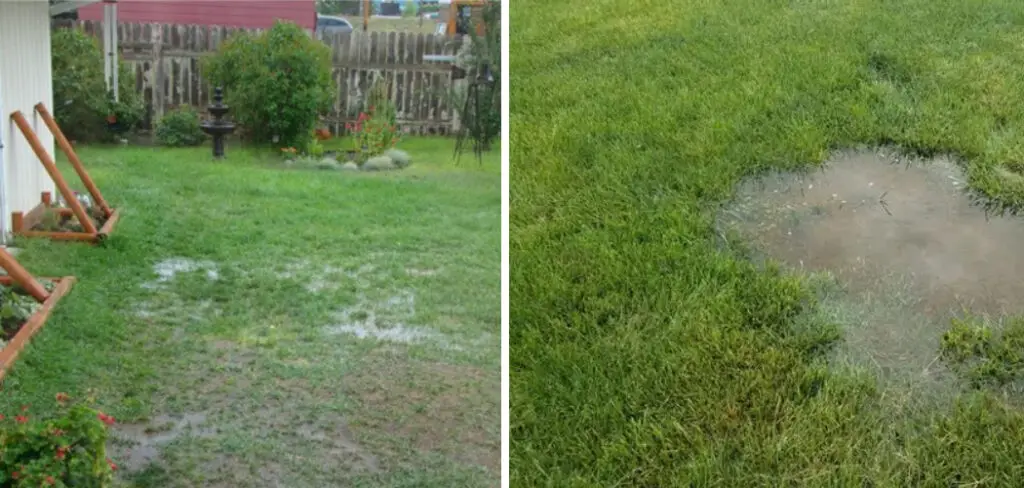
It’s possible that these signs are an indication of a water leak below the surface. Not only can this be damaging to your lawn, but it could also result in higher-than-normal water bills and digging up parts of your yard.
In this blog post, I’ll discuss everything you need to know about how to find a water leak in your yard for troubleshooting and fixing water leaks in your yard – from common symptoms of a potential problem to ideas that will help prevent future issues. So let’s get started!
What Causes Water Leaks in Your Yard?
The most common causes of water leaks in your yard are:
1. Faulty Plumbing Connections
When pipes are connected incorrectly, or fittings come loose, water can leak out into the surrounding soil. It’s important to check all of your plumbing connections frequently for signs of wear and tear. Also, if you have older piping in your home, it’s a good idea to get a professional plumbing inspection done.
2. Poorly Installed Sprinkler Systems
If a sprinkler system isn’t installed properly, there can be leaks in the irrigation lines, and water will seep into the ground. This can lead to soggy patches of grass or plant beds. The system is also likely to be wasting water and costing you money.

3. Broken or Cracked Pipes
If a pipe is cracked, chipped, or broken, then water can leak out into the surrounding soil. This is especially common in areas that experience cold temperatures during winter months, as pipes can freeze and burst due to expanding ice.
Required Items to Find a Water Leak in Your Yard
Once you have identified that there may be a water leak in your yard, it’s time to gather the necessary items for detecting and fixing the problem. Here is a list of tools and materials you will need:
- Garden shovel
- Trenching tool (optional)
- Pipe wrenches
- Plumber’s tape
- Various plumbing fittings
- PVC glue (optional)
10 Ways How to Find a Water Leak in Your Yard
Now that you have all the required items, it’s time to start troubleshooting your water leak. Here are some steps you can take:
1. Check for Visible Signs of Leaks
Start by looking around your yard for any visible signs of water leakage. Look for wet, soggy areas in the soil or grass that seem to stay wet even when it hasn’t rained. Also, look for pools of water near pipes or sprinkler heads that may indicate a leak.
2. Listen Carefully Around Pipes and Sprinkler Heads
Inspect all of your pipes and sprinkler heads. Listen carefully for any hissing or gurgling noises, which may indicate a leak. If the noise is coming from the pipe, then it’s likely that water is leaking out somewhere along its length.
3. Check Your Water Meter
If you have a water meter installed in your home, check to see if there is any water flowing when all of your faucets and appliances are off. If the meter is still running, then it’s likely that there is a water leak somewhere in your home or yard.
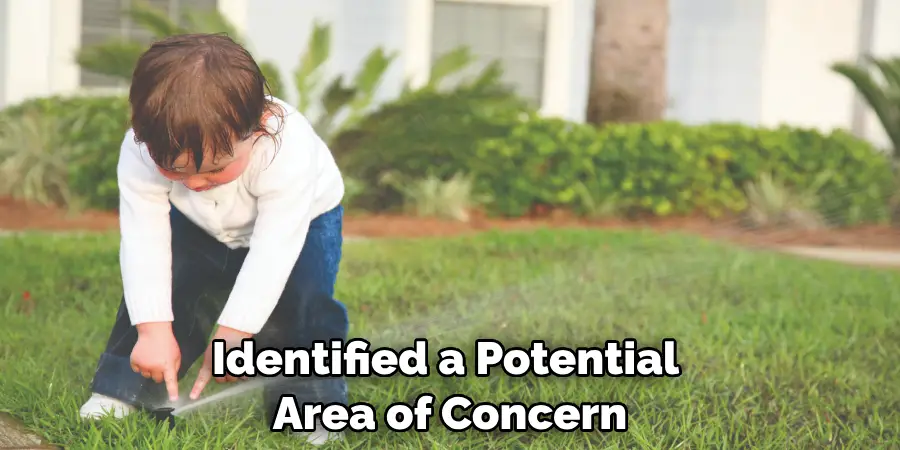
4. Dig Around Sprinkler Heads and Pipes
If you have identified a potential area of concern, start digging carefully around the pipe or sprinkler head. Look for signs of water leakage, such as wet soil or pooling water. If you find a leak, then it’s time to start making repairs.
5. Check Connections and Fittings
If the pipe is leaking at a connection or fitting, then you may be able to fix the issue by tightening the fitting or replacing any worn-out parts.
6. Replace Worn-Out Pipe Sections
If the leak is coming from a worn-out or damaged pipe, then you will need to replace the entire section of the pipe. For plastic pipes, you can use PVC glue and fittings to make the repair. For metal pipes, you may need to use a plumber’s tape and fittings to make sure the connection is secure.
7. Re-Align Sprinkler Heads
If your sprinkler heads are leaking, then you may be able to fix the issue by re-aligning them and adjusting their settings. This can help reduce water waste and prevent further damage to your lawn or garden beds.
8. Clean Your Drains and Gutters
Check your gutters and drains for clogs or debris. This can lead to water pooling in certain areas of your yard, which could be a sign of a potential water leak. It’s important to clean out any debris or leaves from the gutters and drains regularly to prevent this problem from occurring.
9. Check for Tree Roots
Tree roots can also cause water leaks in your yard. If you see any possible root intrusion, it’s important to remove them immediately, as they may have caused damage to the pipe or sprinkler head.
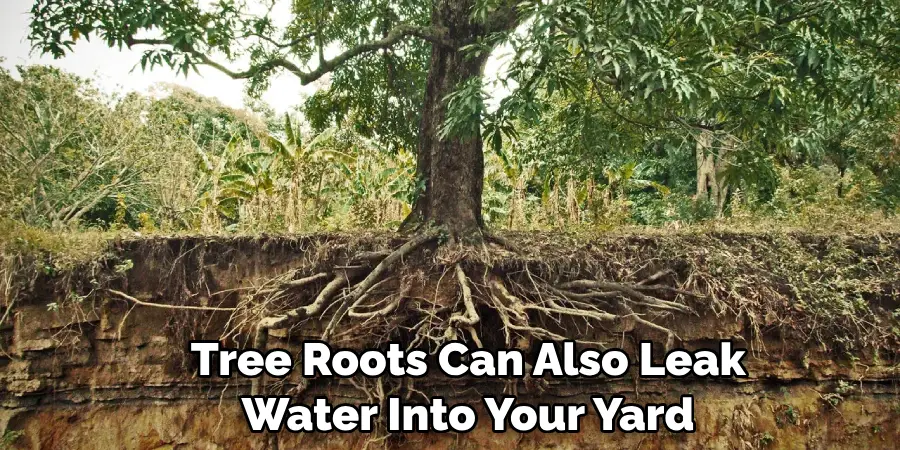
10. Get Professional Help
If all else fails, it may be time to call in a professional plumber or water specialist. They will be able to investigate the issue more thoroughly and determine the best course of action for fixing it.
By following these steps, you should be able to find and fix any water leaks in your yard. It’s important to stay on top of potential issues like this as they can cause significant damage if left unchecked. Be sure to get regular check-ups done and take preventive measures to avoid costly repairs in the future.
8 Maintenance Tips To Help You Find A Water Leak In Your Yard
1. Monitor your water meter. Keep an eye on your water meter to detect any increases in usage, which may indicate a leak. Ideally, you should check it once a month and write down the readings for comparison purposes.
2. Look for wet spots or soggy areas in your yard. If you have an underground water leak, it can create wet spots or soggy areas in your lawn. Be sure to check for these regularly, as they are signs of a leak.
3. Check faucets and hoses around the yard. Make sure all faucets and hoses are properly connected and not leaking anywhere. Even small leaks can add up over time.
4. Inspect your sprinkler system. Broken or leaky sprinkler heads can cause a significant amount of water to be wasted if not addressed quickly. Inspecting your sprinkler system regularly will help you catch any issues before they become a problem.
5. Review your water bill for unusual charges. Look at the last few months of bills and compare them to previous ones. If you notice an unusually high charge or a sudden spike in usage, this could be indicative of a leak.
6. Have your plumbing inspected by a professional. Hiring an experienced plumber to inspect your piping and plumbing can help you detect any hidden water leaks. Hiring a professional is the best way to make sure your home’s plumbing system is running efficiently.
7. Use technology to detect leaks. There are now many different technologies available that can help you detect water leaks in your yard quickly and accurately. Investing in one of these systems may be a good idea if you suspect you have an issue but cannot locate it easily.
8. Contact your local water department. If you have checked all of the possible sources and still cannot find a leak in your yard, it may be time to contact your local water department for help. They can use specialized equipment to detect leaks that are not visible to the naked eye.
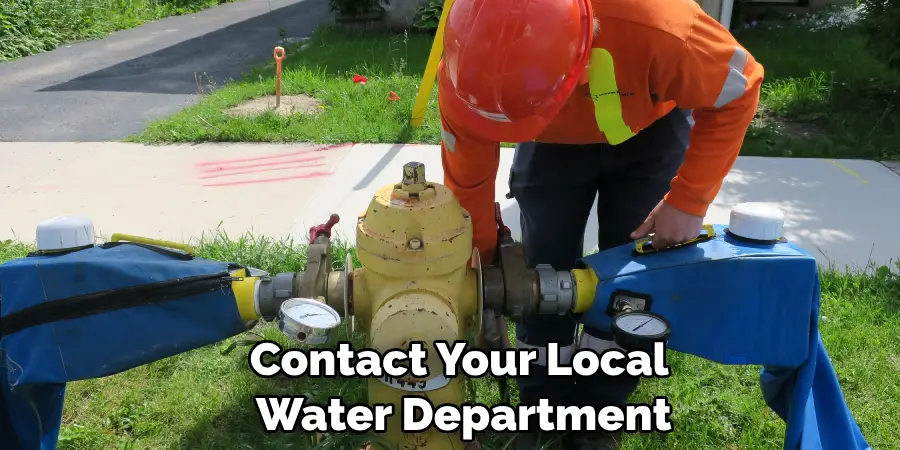
With these tips, you’ll be able to quickly and accurately find water leaks in your yard and prevent costly damage. Don’t let a leak go undetected for too long and be sure to check your home regularly for signs of a potential issue. By taking these preventive measures, you can save yourself time, money,
and stress in the future.
Conclusion
Carefully check your yard for signs of a water leak to prevent further damage to your property. This includes looking for patches of greener grass, avoiding puddles from forming in low-lying areas, noting where the water is rising and falling around underground piping, and filling in any dips or depressions that appear on your grounds.
If you have any suspicion that there might be a leak in your yard, it’s important that you contact an experienced professional right away to conduct an assessment of the area so that they can quickly repair the issue before it becomes more serious.
Taking this step on how to find a water leak in your yard will ensure that costly damages are avoided while helping you protect and preserve both your home and your lawn. Acting fast is key – don’t wait until it’s too late! So if you suspect a water leak in your yard, be sure to consult with a professional today!
About
Outdoor Fixes is a distinguished figure in the world of Diy design, with a decade of expertise creating innovative and sustainable Diy solutions.
His professional focus lies in merging traditional craftsmanship with modern manufacturing techniques,
fostering designs that are both practical and environmentally conscious. As the author of diy,
outdoorfixes delves into the art and science of outdoorfixes-making, inspiring artisans and industry professionals alike.
Education RMIT University
(Melbourne, Australia) Associate Degree in Design (Outdoor Fixes) Focus on sustainable design, industry-driven projects,
and practical craftsmanship. Gained hands-on experience with traditional and digital manufacturing tools, such as CAD and CNC software.
Nottingham Trent University
(United Kingdom) Bachelor’s in outdoorfixes.com and Product Design (Honors) Specialized in product design with a focus on blending creativity with production
techniques. Participated in industry projects, working with companies like John Lewis and Vitsoe to gain real-world insights.
Publications and Impact
In diy, Outdoor Fixes his insights on indoor design processes, materials, and strategies for efficient production.
His writing bridges the gap between artisan knowledge and modern industry needs, making it a must-read for both budding designers and seasoned professionals.

